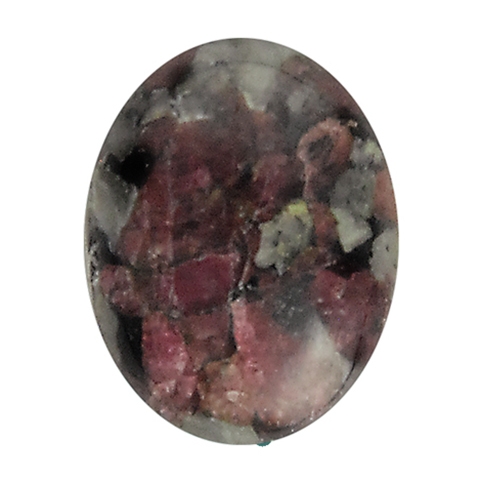Eudialyte
Occurs in nepheline syenites, alkalic granits and associated pegmatites. Eudialyte is a a slicate of Zirconium, sodium, calcium and iron, it can show distinctive colors of a red-violetmagenta, red, pink, blue, yellow and an attractive brown. Much of the eudialyte on the market today comes from the Kola Peninsula, Russia.
Most gems have a crystalline structur. Crystals have planes of symmetry and are divided into seven symmetry systems. The number of axes, their length, and their angle to each other determine the system to which a crystal belongs. Eudialyte gemstones crystallize in the hexagonal crystal system. Crystals are typically rhombohedral but can be long prisms. It is most commonly massive or as a vein filling.
Possesses a translucent to transparent " Diaphaneity ".
Na16Ca6Fe3Zr3(Si3O9)2(Si9O27)2(OH,Cl)4
Healthy healing energies energizes, grounds and motivates, particularily strengthens the " heart Charka ".
Mineralogists at the canadian Museum of nature and the University of Copenhagen found 46 different chemical elements in Eudialyte's crystal structure & chemical elements. The intensely carmine color has been referred to as "Dragons Blood", by some Russian dealers.






